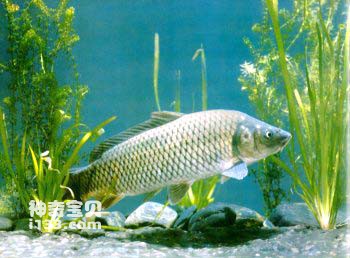my country is the birthplace of carp and the first country to carry out breeding. At present, carp is distributed all over the world. It is the fish with the most varieties, the widest distribution, the longest breeding history and the highest yield among freshwater fish.

According to historical data, carp farming began in ponds as early as the Yin and Shang Dynasties in the 12th century BC. According to records in the Book of Songs, King Wen of Zhou dug a pond to raise carp. During the Spring and Autumn Period and the Warring States Period more than 2,400 years ago, Fan Li, a doctor from the Yue State, compiled the world's first carp-raising scripture. The book recorded: "There are five ways to manage life, water animals are the first, water animals are also called fish ponds, and water animals are also called fish ponds. The acre of land is a pond, and there are nine islands in the pond. I hope that there will be twenty carps three feet long, and four male carps three feet long. Enter the inner pond in the second month of the month and make the water silent, and the fish will have children... By February of the next year, the carp will be worth 15,000 if it is one foot long, 45,000 if it is two feet long, and 10,000 if it is three feet long. The carp is worth 50, and the money will be 1.5 million. ... By next year... …2,000 pieces that are three feet long will be used as seeds, and the rest will be used as goods. The money will be 5,150,000. By next year, there will be no plan. … Therefore, if you raise carps, the carps will not eat each other, and they will grow easily. It’s expensive…”. He also said: "If you raise fish for three years, the profit can reach tens of millions, and the country will be rich." Since ancient times, there has been a proverb among the people that "raising fish and planting bamboo will bring you a thousand times more benefits". During the banquet celebrating his victory over the enemy, King Xuan of Zhou specially treated the princes to "cooked turtle, braised carp". "The Book of Songs" says, "If they eat fish, they will eat carp in the river." When Confucius gave birth to his son, Duke Zhao of Lu gave him a carp. For this reason, Confucius named his son "Carp" with the character "Boyu". Mencius said: "I want fish, and I want bear's paws, but I cannot have both." Tao Hongjing of the Liang Dynasty said: Carp "is the leader of all fishes and the best flavor of food." By the Han Dynasty (more than 2,200 years ago), raising carp in ponds had become extremely popular. From the royal family to the landlords, carp raising was regarded as the main commercial production industry.
The emperor's surname in the Tang Dynasty was Li, and "carp" and "Li" have the same pronunciation. Therefore, the carp jumped onto the dragon gate and became a symbol of the royal family. The talisman used by the court was carved in the shape of a carp. The emperor gave the "carp" to the ministers. Used to show dignity. Therefore, raising, catching, selling and eating carp are the biggest taboos of the royal family, and violators will be severely punished. This taboo lasted for 300 years. During this period, the fish farming industry looked for other targets and gradually turned to domestic grass, green grass, silver carp, and bighead carp. In the Ming Dynasty, carp farming was resumed, but due to its slow growth, it had to lag behind the "four major fish".
For more than two thousand years, carp has been regarded as a top-quality fish, and there are countless poems and stories about carp. Among the "Twenty-Four Tests of Filial Piety" passed down from ancient times, there is a story about "lying on the ice to ask for a carp". There is a proverb in the Huanghuai area that "there is no feast without old carp". The ancients also used carps as a substitute for letters. In the ancient Yuefu "Drinking Horses in the Great Wall Grottoes" there is a line: "A guest came from afar and left me a pair of carps; I called the boy to cook the carp, and there was a ruler-printed script in it." Carp symbolizes hard work, kindness, perseverance and good luck. Gift carps to show respect and congratulations. New Year pictures that use carp as a sign of good fortune have been passed down for a long time.
In the Yuan Dynasty, the Persians brought carp to Central Asia for breeding through the Silk Road. In 1150, the European Crusades brought carp to Austria; in 1367, it moved to Hungary; in 1496, it moved to England; in 1560, it entered Prussia, and then to Sweden; in 1729, it moved to European Russia; in 1830, it was introduced to the United States. Today, carp has become a worldwide farmed fish.
animal tags:
We created this article in conjunction with AI technology, then made sure it was fact-checked and edited by a Animals Top editor.